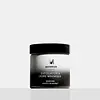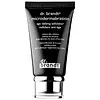What's inside
What's inside
 Key Ingredients
Key Ingredients

 Benefits
Benefits

 Concerns
Concerns

 Ingredients Side-by-side
Ingredients Side-by-side

Water
Skin ConditioningCaprylic/Capric Triglyceride
MaskingGlyceryl Stearate Se
EmulsifyingPropylene Glycol
HumectantCetyl Alcohol
EmollientGlycerin
HumectantGlycolic Acid
BufferingCyclomethicone
EmollientHydrated Silica
AbrasiveGlyceryl Stearate
EmollientPEG-100 Stearate
Triticum Vulgare Germ Oil
EmollientSodium Magnesium Silicate
Cera Alba
EmollientIsopropyl Palmitate
EmollientAloe Barbadensis Leaf Juice
Skin ConditioningPanthenol
Skin ConditioningSodium Cocoyl Isethionate
CleansingXanthan Gum
EmulsifyingCitric Acid
BufferingPhenoxyethanol
PreservativeDecylene Glycol
Skin ConditioningCaprylyl Glycol
EmollientSodium Benzoate
MaskingPotassium Sorbate
PreservativeParfum
MaskingMica
Cosmetic ColorantCI 77891
Cosmetic ColorantButylphenyl Methylpropional
PerfumingWater, Caprylic/Capric Triglyceride, Glyceryl Stearate Se, Propylene Glycol, Cetyl Alcohol, Glycerin, Glycolic Acid, Cyclomethicone, Hydrated Silica, Glyceryl Stearate, PEG-100 Stearate, Triticum Vulgare Germ Oil, Sodium Magnesium Silicate, Cera Alba, Isopropyl Palmitate, Aloe Barbadensis Leaf Juice, Panthenol, Sodium Cocoyl Isethionate, Xanthan Gum, Citric Acid, Phenoxyethanol, Decylene Glycol, Caprylyl Glycol, Sodium Benzoate, Potassium Sorbate, Parfum, Mica, CI 77891, Butylphenyl Methylpropional
Water
Skin ConditioningAlumina
AbrasiveCaprylic/Capric Triglyceride
MaskingGlycerin
HumectantCetyl Alcohol
EmollientGlyceryl Stearate
EmollientPEG-100 Stearate
Ammonium Acryloyldimethyltaurate/Vp Copolymer
Simmondsia Chinensis Seed Oil
EmollientXanthan Gum
EmulsifyingPhenoxyethanol
PreservativeLactic Acid
BufferingParfum
MaskingMenthone Glycerin Acetal
RefreshingAllantoin
Skin ConditioningDisodium EDTA
Tocopheryl Acetate
AntioxidantMagnesium Oxide
AbsorbentPropylene Glycol
HumectantAloe Barbadensis Leaf Extract
EmollientVitis Vinifera Seed Extract
AntimicrobialChamomilla Recutita Flower Extract
MaskingCamellia Sinensis Leaf Extract
AntimicrobialCitral
PerfumingLimonene
PerfumingWater, Alumina, Caprylic/Capric Triglyceride, Glycerin, Cetyl Alcohol, Glyceryl Stearate, PEG-100 Stearate, Ammonium Acryloyldimethyltaurate/Vp Copolymer, Simmondsia Chinensis Seed Oil, Xanthan Gum, Phenoxyethanol, Lactic Acid, Parfum, Menthone Glycerin Acetal, Allantoin, Disodium EDTA, Tocopheryl Acetate, Magnesium Oxide, Propylene Glycol, Aloe Barbadensis Leaf Extract, Vitis Vinifera Seed Extract, Chamomilla Recutita Flower Extract, Camellia Sinensis Leaf Extract, Citral, Limonene
Ingredients Explained
These ingredients are found in both products.
Ingredients higher up in an ingredient list are typically present in a larger amount.
This ingredient is an emollient, solvent, and texture enhancer. It is considered a skin-softener by helping the skin prevent moisture loss.
It helps thicken a product's formula and makes it easier to spread by dissolving clumping compounds.
Caprylic Triglyceride is made by combining glycerin with coconut oil, forming a clear liquid.
While there is an assumption Caprylic Triglyceride can clog pores due to it being derived from coconut oil, there is no research supporting this.
Learn more about Caprylic/Capric TriglycerideCetyl Alcohol is a fatty alcohol. Fatty Alcohols are most often used as an emollient or to thicken a product.
Its main roles are:
Though it has "alcohol" in the name, it is not related to denatured alcohol or ethyl alcohol.
The FDA allows products labeled "alcohol-free" to have fatty alcohols.
Learn more about Cetyl AlcoholGlycerin is already naturally found in your skin. It helps moisturize and protect your skin.
A study from 2016 found glycerin to be more effective as a humectant than AHAs and hyaluronic acid.
As a humectant, it helps the skin stay hydrated by pulling moisture to your skin. The low molecular weight of glycerin allows it to pull moisture into the deeper layers of your skin.
Hydrated skin improves your skin barrier; Your skin barrier helps protect against irritants and bacteria.
Glycerin has also been found to have antimicrobial and antiviral properties. Due to these properties, glycerin is often used in wound and burn treatments.
In cosmetics, glycerin is usually derived from plants such as soybean or palm. However, it can also be sourced from animals, such as tallow or animal fat.
This ingredient is organic, colorless, odorless, and non-toxic.
Glycerin is the name for this ingredient in American English. British English uses Glycerol/Glycerine.
Learn more about GlycerinGlyceryl Stearate is a mix of glycerin and stearic acid.
It is used to stabilize the mixing of water and oil ingredients. By preventing these ingredients from separating, it can help elongate shelf life. It can also help thicken the product's texture.
As an emollient, it helps soften skin and supports barrier-replenishing ingredients.
In cosmetics, Glyceryl Stearate is often made from vegetable oils or synthetically produced.
This ingredient may not be fungal-acne safe
Fun fact: The human body also creates Glyceryl Stearate naturally.
Learn more about Glyceryl StearateParfum is a catch-all term for an ingredient or more that is used to give a scent to products.
Also called "fragrance", this ingredient can be a blend of hundreds of chemicals or plant oils. This means every product with "fragrance" or "parfum" in the ingredients list is a different mixture.
For instance, Habanolide is a proprietary trade name for a specific aroma chemical. When used as a fragrance ingredient in cosmetics, most aroma chemicals fall under the broad labeling category of “FRAGRANCE” or “PARFUM” according to EU and US regulations.
The term 'parfum' or 'fragrance' is not regulated in many countries. In many cases, it is up to the brand to define this term.
For instance, many brands choose to label themselves as "fragrance-free" because they are not using synthetic fragrances. However, their products may still contain ingredients such as essential oils that are considered a fragrance by INCI standards.
One example is Calendula flower extract. Calendula is an essential oil that still imparts a scent or 'fragrance'.
Depending on the blend, the ingredients in the mixture can cause allergies and sensitivities on the skin. Some ingredients that are known EU allergens include linalool and citronellol.
Parfum can also be used to mask or cover an unpleasant scent.
The bottom line is: not all fragrances/parfum/ingredients are created equally. If you are worried about fragrances, we recommend taking a closer look at an ingredient. And of course, we always recommend speaking with a professional.
Learn more about ParfumPeg-100 Stearate is an emollient and emulsifier. As an emollient, it helps keep skin soft by trapping moisture in. On the other hand, emulsifiers help prevent oil and water from separating in a product.
PEGS are a hydrophilic polyether compound . There are 100 ethylene oxide monomers in Peg-100 Stearate. Peg-100 Stearate is polyethylene glycol ester of stearic acid.
Phenoxyethanol is a preservative that has germicide, antimicrobial, and aromatic properties. Studies show that phenoxyethanol can prevent microbial growth. By itself, it has a scent that is similar to that of a rose.
It's often used in formulations along with Caprylyl Glycol to preserve the shelf life of products.
Propylene Glycol is an odorless, colorless liquid. As a humectant, it helps skin retain moisture. It also aids in delivering active ingredients.
Another role of this ingredient is preventing a product from melting or freezing. Propylene glycol also adds antimicrobrial properties to a product, elongating product lifespan.
This ingredient is considered an organic alcohol and commonly added into both cosmetics and foods.
Those with sensitive skin or conditions may develop a rash when using this ingredient.
Learn more about Propylene GlycolWater. It's the most common cosmetic ingredient of all. You'll usually see it at the top of ingredient lists, meaning that it makes up the largest part of the product.
So why is it so popular? Water most often acts as a solvent - this means that it helps dissolve other ingredients into the formulation.
You'll also recognize water as that liquid we all need to stay alive. If you see this, drink a glass of water. Stay hydrated!
Learn more about WaterXanthan gum is used as a stabilizer and thickener within cosmetic products. It helps give products a sticky, thick feeling - preventing them from being too runny.
On the technical side of things, xanthan gum is a polysaccharide - a combination consisting of multiple sugar molecules bonded together.
Xanthan gum is a pretty common and great ingredient. It is a natural, non-toxic, non-irritating ingredient that is also commonly used in food products.
Learn more about Xanthan Gum